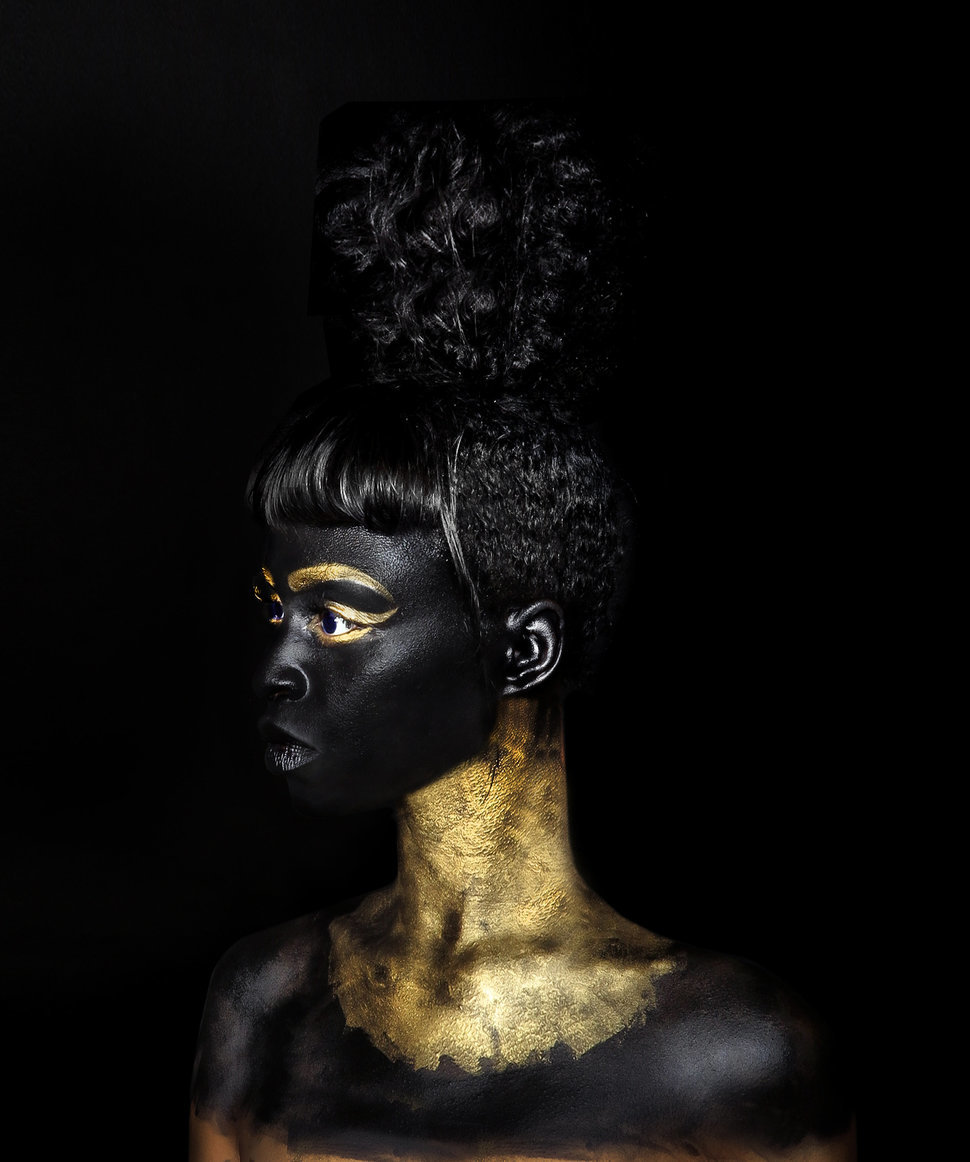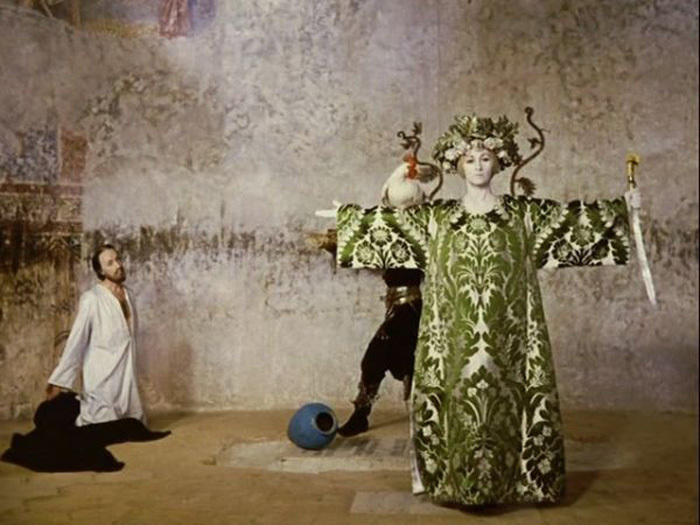Culturally speaking, we hate ornament. It’s considered vulgar. Good taste, 90 per cent of the time, equals simplicity. Good art equals “grit”. Ornament equals neither. The highly decorative, the ornate, the stylistically abundant have all been branded within western art and design history as somehow harmfully excessive, as too much, as “over the top”. But it is really worth asking, over the top of what? The answer is explicitly scrawled across almost all aspects of contemporary culture.

The 300 films are just one example. In them, the antagonist King Xerxes glitters in ornament, his entire body dazzlinglyadorned in gold jewellery. His penchant for the decorative is a sign of his depravity. It is a trustedformula: the villain as effete, beauty-loving jewel-worshipper. Why this particular instance is so revealing is because it lays out, all at once, the workings of the western psyche: a shameless triangulation of depravity, effeminacy and racial Otherness signified by the decorated brown body. “Over the top” here, as elsewhere, means over the top of masculine taste. If this portrayal felt problematic in 2006, when the first 300 film came out, or in 2014, when its sequel followed it, the years have done nothing to ease the sting.
But of late there has been an embracing of the decorative that has coincided with a rise in conscientious artists and designers becoming increasingly sophisticated at navigating questions of cultural appropriation, gender and queerness.

Exemplary of this is designer Grace Wales Bonner’s representation of people of colour, particularly of young black men. Her output is one in which unflinching emphasis is given to decorative detail, an emphasis which derails, with its own ornamental violence, so many an exasperating narrative concerning black masculinity. Elsewhere Afrofuturism, or what is being labelled Afrofuturism, has brought with it a renewed interest in the decorative arts. Artist Lina Iris Viktormakes use of the visually ornate in her work where an attention to surface detail references various sources including the Dogon in Mali and Ancient Egyptian hieroglyphics.

Such work, work which contemplates the surface, has a long and rather gruelling history of denigration in the West. From Kant to Adolph Loos the foundation of dominant taste is built on a contempt of the decorative, seeing it as something culturally bereft of value, something vacuous, cosmetic and frivolous. These things in turn are seen as feminine and foreign, and thus, undesirable. When it comes to contemporary criticism, all of these tenets are still recklessly applied. The colonial classification of non-western art, such as girih (a form of Islamic geometric surface decoration), as a barbarian fixation with the cosmetic is not that far removed from that much loved adage of contemporary critics, “all style and no substance”. What’s more, contemporary criticism’s obsession with extracting “meaning”, of demanding to know what the work’s about and what is says, is one that struggles to satisfactorily appreciate work that operates on a decorative or stylised level.
Rosalind Galt, the author of Pretty, a defence of the decorative image, has traced this history of anti-ornament, noting that even less conservativelyminded audiences and critics fail to recognise the subversive potential of ornamental imagery, noting the way that art which is aesthetically gritty but devoid of integrity or is even say, racially offensive, is more likely to be praised than work that uses ornament as its primary tool.
Ornament’s ability to subvert and destabilise is something which in part issues from its very status as excessive or useless, something particularly pertinent when considered in a queer or racial context. The history of radical ornament is one that encompasses not only films like Parajanov’s Colour of Pomegranates but also various countercultural performances. One need only think of the socially charged elements of the disco movement, ball culture and the subversive black American drag scene.

And if even “radical” taste standards have been hostile towards the decorative then it is because so often a hate of decoration is firmly planted in misogyny. The likes of architect and critic Adolph Loos, whose works like Ornament and Crime continue to influence socialist aesthetics, is a notable example. In his celebrated text The Poor Little Rich Man he gives an allegory in which a bourgeois man imposes a highly ornamental design scheme on his home which is so demanding it ultimately takes over his life. Loos’ conflation of the decorative with the bourgeoisie was as much about feminising a political enemy by way of ornament, and ornament by way of misogyny, as it was about any aesthetic truth.
It is worth noting that Loos was fixated on designing a modernist house for the performer Josephine Baker – the highest paid performer in Europe in the 20s. A black woman and activist whose elaborate shows were provocative in their performance of race and gender in front of often all-white, all-male audiences. His desire to “house” this woman in a monochromatic building has been subject to much scrutiny.

In fact, today’s poor little rich man is likely to inhabit in a minimalist urban palace or a Brutalist loft. If neither of these styles have been tarnished for critics this is perhaps because they satisfy masculine and western ideals of restrictive form (minimalism) on the one hand and masculine aesthetics of radicalism (Brutalism) on the other. And if the very idea of “radical” is an awkward one, also awkward should be the fact that a now so commodifiable term is withheld from ornament.
Whilst a demand for simplicity, purity or, god forbid, understatement might in itself be harmless when it comes to setting boundaries on taste, on what is O.T.T we should be suspicious. The question is not just “over the top of what?” but also “over the top of whom?” Whose blandness?
Credits
Text S Von Reynolds
Main image, still from The Colour Of Pomegranates
